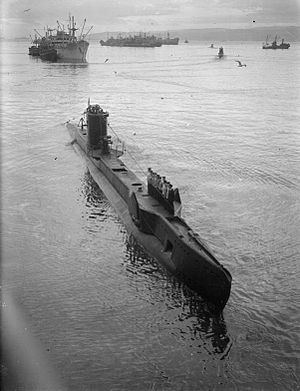
HMS Umbra (P35) was a Royal Navy U-class submarine built by Vickers-Armstrongs at Barrow-in-Furness. So far she has been the only ship of the Royal Navy to bear the name Umbra.

HMS Safari was a third batch S-class submarine built for the Royal Navy during World War II. Commissioned in 1942, she was assigned to operate in the Mediterranean Sea. During the course of the war, Safari sank twenty-five ships, most of which were Italian.
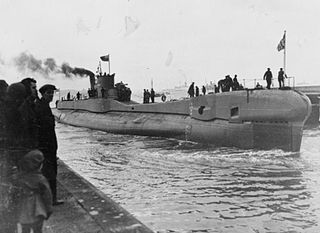
HMS Trident was a British T class submarine built by Cammell Laird, Birkenhead. She was laid down on 12 January 1937 and was commissioned on 1 October 1939. HMS Trident was part of the first group of T class submarines.

HMS Sickle was a third-batch S-class submarine built for the Royal Navy during World War II. Completed in 1942, she made her initial war patrol off the Norwegian coast. Sickle then sailed to Gibraltar, from where she conducted one patrol, then to Algiers, French North Africa. From 10 May to 10 October, the boat patrolled the Gulf of Genoa five times and sank a German submarine as well as three minesweepers and an escort ship. She then moved to Beirut, French Lebanon, and conducted two patrols in the Aegean Sea, sinking three caïques and a merchant ship, in addition to landing resistance operatives in Greece.

HMS Seadog was a third-batch S-class submarine built for the Royal Navy during World War II. Completed in September 1942, she spent most of her career in Arctic waters, off Norway, but sank only one German ship in 13 patrols. In January 1945, she was redeployed to the Far East, meeting more success. On her first patrol in the area, the submarine rescued four American airmen. After two patrols, she and her sister ship HMS Shalimar sank five sailing vessels, two coasters, a barge, a tugboat and a Japanese tank landing ship. After the war ended, Seadog was sent back to England, placed in reserve, then sold for scrap in December 1947. She was ultimately broken up in August 1948.
HMS Clyde was a submarine of the River class. She was built by Vickers Armstrong, Barrow and launched on 15 March 1934. Building was completed on 12 April 1935. Initially planned to be part of a class 20 strong, Clyde would be the third and final of the boats to be completed and launched.

HMS Rorqual (N74) was a British mine-laying submarine, one of the six ships of the Grampus class of the Royal Navy. She was built by Vickers Armstrong, Barrow and launched 27 July 1936. She served in the Second World War in the Mediterranean and in the far east. She was the only Grampus-class submarine to survive the war, and she is considered the most successful minelaying submarine of World War II, sinking 57,704 GRT of enemy shipping, 35,951 of which through her mines.

HMS Torbay (N79) was a T-class submarine of the Royal Navy. She was laid down at Chatham Dockyard and launched on 9 April 1940.

HMS Thrasher (N37) was a T-class submarine of the Royal Navy. She was laid down by Cammell Laird & Co Limited, Birkenhead, launched in November 1940, and had an active career in the Mediterranean and Pacific Far East.

HMS Ultor (P53) was a Royal Navy U-class submarine built by Vickers-Armstrong at Barrow-in-Furness, launched in 1942, and part of the third group of the class. So far she has been the only ship of the Royal Navy to bear the name Ultor.
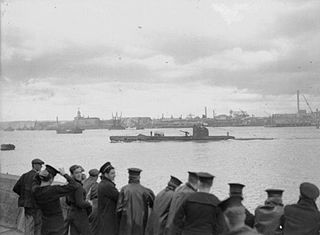
HMS Unbroken (P42) was a Royal Navy U-class submarine built by Vickers-Armstrong at Barrow-in-Furness; it was part of the third group of that class and has been the only vessel of the Royal Navy to bear the name. She entered service as P42 and was renamed Unbroken on 1 February 1943.
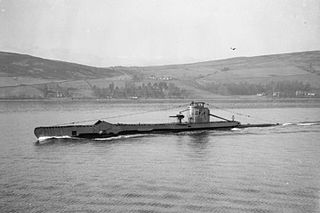
HMS Unison (P43) was a Royal Navy U-class submarine built by Vickers-Armstrong at Barrow-in-Furness, and part of the third group of that class. She is the only craft of the Royal Navy to have borne the name Unison. Prior to receiving the name, she carried the pennant number P43 and was unofficially known as Ulysses. She was renamed Unison in 1943.
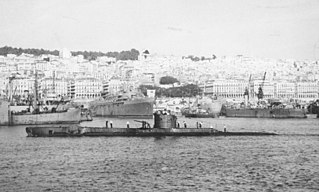
HMS Universal (P57) was a Royal Navy U-class submarine built by Vickers-Armstrong at Newcastle upon Tyne. So far she has been the only ship of the Royal Navy to bear the name Universal.

HMS Unrivalled (P45) was a U-class submarine built for the Royal Navy during World War II. The boat has been the only ship of the Royal Navy to ever bear the name Unrivalled. Completed in 1942, the boat spent most of the war in the Mediterranean. She sank a number of small merchant ships and naval auxiliaries, but major success eluded her during the war. Too small and slow for the post-war environment, Unrivalled was scrapped in 1946.
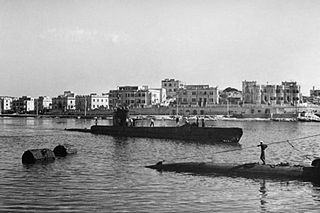
HMS Unruffled was a Royal Navy U-class submarine built by Vickers-Armstrong at Barrow-in-Furness. So far she has been the only ship of the Royal Navy to bear the name Unruffled.

HMS Unruly was a Royal Navy U-class submarine built by Vickers-Armstrong at Barrow-in-Furness. So far she has been the only ship of the Royal Navy to bear the name Unruly.
HMS Unsparing (P55) was a Royal Navy U-class submarine built by Vickers-Armstrong. So far she has been the only ship of the Royal Navy to bear the name Unsparing.
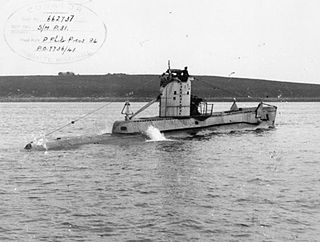
HMS Uproar (P31) was a Royal Navy U-class submarine built by Vickers-Armstrong at Barrow-in-Furness. So far she has been the only ship of the Royal Navy to bear the name Uproar. She was originally named P 31, renamed Ulleswater in February 1943 and finally renamed Uproar in April 1943.

HMS P47 was a Royal Navy U-class submarine built by Vickers-Armstrong. She was transferred to the Royal Netherlands Navy before completion and renamed HNLMS Dolfijn.
William Hedley Kett, DSC and Bar was a British submariner who commanded two ships during the Second World War.
